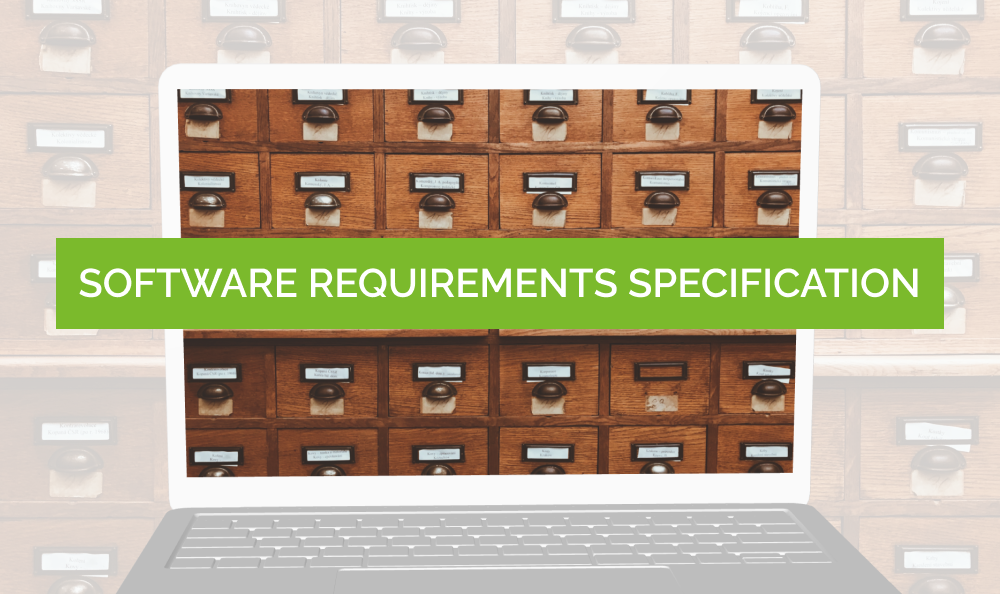Why and How to Create Software Requirements Specification (SRS) for Your Startup?

Supporting startups we meet enthusiastic entrepreneurs with ideas each day. They are totally different but almost everyone (who is not ‘tech-savvy’ or first-time entrepreneur) has one thing in common – they don’t have the idea documented or have just a small brief. However, this is not enough to give them an idea of the budget, timeline, or start the work.
So today we wanted to outline the concept of Software Requirements Specification, reasons to invest time in it in the initial stage, and how to make it right. But let’s start from the very beginning.
Table of Contents:
- What is the Software Requirements Specification?
- Why is Software Requirements Specification (SRS) so important?
- What should decent Software Specifications include?
- OUTLINE
Let’s have a more detailed look. But before we begin, here are some materials you might also need:
- 7 Steps of Project Discovery Phase – You Should Know to Avoid Failure
- How to Hire a Dedicated Development Team – 9 Steps to Simplify the Hiring Process
- How To Build MVP – Step by Step Guide for Startups
- What Is The Cost Of Bug Fixing And How To Optimize It
What is the Software Requirements Specification?
Software Requirements Specification or SRS is a set of documents that contain the fundamental information about the concept – how the final product will look like, what features it has. In other words, you can say it’s a roadmap for product development.
Starting a business requires a clear plan and the same thing applies to product development. Going without it will only mean more losses from your side – time and cost. If created right, SRS accumulates the customer’s needs and requirements.
Simultaneously, it provides necessary information for the developers, quality assurance team, and management.
Usually, the specifications are divided into 2 types – functional and technical specifications. Let’s see what the differences are.
Functional Specifications
Overall it’s the document that contains detailed information on how the product will look like from a user’s perspective, its general structure, and features prioritized.
This kind of specification anyone with an understanding of the idea can do. There are no deep technical details but it allows the tech team to prepare the estimation, get the full picture.
Technical Specifications
On the other hand Technical specification is meant to describe all the technical aspects for further development. It outlines: Tech stack, Detailed information on the interface signatures, Class models, Specific algorithms, Milestones, API, and integrations. So it’s not very easy for a non-tech-savvy person to do it. The ideal option is to make a Functional one yourself and based on it the tech team will make the Tech specification.
Any questions as to preparation?
Why is Software Requirements Specification (SRS) so important?
On the startup initial stage time is the main resource so why should you invest it in the Software Requirements Specification? Let’s review the benefits you get in more detail:
Team knows your idea from end to end
With the formed specification you can be sure that everyone sees the picture as you do, and knows your expectations for the final product. Every developer based on his/her experience can make totally different assumptions if there is no transparency. This can lead to misunderstandings and lost time so the specification is a great solution.
It’s actually useful to arrange a small brainstorm with the technical team. With their experience, they can make great suggestions that will benefit your product, help avoid risks, and stand out.

Polishing the idea
While working on the exact specifications you can rethink certain points and make the concept better on the way. The user experience is crucial to winning the target audience and this is a good chance to work on all details right away.
Risk and cost reduction
A finalized product specification has a clear description of all the features, design tweaks, and architecture so the project can be estimated right. There will be no need to redevelop anything, as the development team will follow everything mentioned in the plan.
Exact estimation
If a product is not fully specified, it is almost impossible to estimate the project and provide the exact budget. There is no way to predict the needed changes and full set of features.
Smooth scheduling
A properly created project specification can help in forming milestones based on the priority of features. As a result, plan the workload of the whole team and each member separately beforehand. + Based on this plat it would be easy to track the progress for each point.
Optimized process
With all the milestones and tasks outlined the whole development process will be smooth. With the minimum of supervision with the right team, you will get a quality project. Without unexpected delays or issues. The process will have a clear mention of what work is assigned to whom and when the work has to be completed. It significantly reduces the chances of errors and controversies.
What should decent Software Specifications include?
Benefits are looking good but what the quality specification should include? Let’s review what Software Requirements Specification (SRS) should include.
Introduction Part
- Purpose
In this section, you should outline the idea, describe what problems it solves for the clients and its mission. Also it can include the basic info about your company and user personas.
- References
This section should include the list of your direct competitors (if there are some) and references that you like and take your inspiration from. It’s not necessary should be the platforms related to your industry, but you need to outline what exactly and why you like about them.
Main Description Part
- Product Features
This section is needed to describe part of the functionality at a higher level. It might be a description of every feature in relation, also important to outline them all no matter how small.
- User Roles and Permissions
For further estimation and outlining the project to the fullest, you should describe every user. For example – registered users, unregistered users, admin, etc. The features and overall looks can change from user to user so it’s important to clarify this moment.
- Overall Structure
Ideally, you should have the wireframes but at this stage, you can make simple ones (even drawn) yourself. They don’t need to be perfect, just describe each page and the relations between them. In other words ‘userflow’ – what and where the user should click to get the needed result. There are also numerous simple + free tools to make a digital clickable version like – InVision Studio, Figma, Marvel, etc.

- Operating environment
As comes from the name of the section, we describe the environment in which the product will work. The operating system, version of compilers, database, server, software, hardware, and other things that are crucial for your product.
It can be challenging to fill out without deeper technical knowledge, so it’s better to delegate this part to the tech team you are sure about, though the small research to take part in the brainstorming would be good too.
Interested in hiring a Dedicated Team? More in our article – How to Find and Hire a Reliable Dedicated Development Team
Any questions as to preparation?
- Design and Standards
This point might be or not included, depending on whether you have any designs or standards.
System Features Part
- Description and Priority
In this point, you should describe features in detail. What is it for? What should it do? What part of this task should it perform?
Which ones are mandatory for the first launch and which can wait for further updates? This way you would have a transparent plan if you decide on developing an MVP rather than a full product.
Here, you can find Step by Step Guide for Startups on How To Build MVP.
- Response Sequences
The trigger of a feature. When does it start working? And when should it stop?
This is the simplistic version of specification anyone with an idea can work through. In order to give the team an idea and proceed with the estimation, and technical requirements. This obviously is not all the info needed for the seamless development experience but it gives a strong base to push away from.
OUTLINE
For the business owner, it’s sometimes hard to describe the idea to its fullest yet it’s fundamental to work through all the details. There are barebones that anyone without a technical background can do that would be a perfect base to start. And in this article, we outlined the recipe.
But you need to remember – the success of a future project depends on how clearly and in detail you state your requirements and wishes so ideally would be to get the tech team (provider) involved. Often the teams with the Project Management department offer that option and will also offer your ideas and comments that can benefit the project.